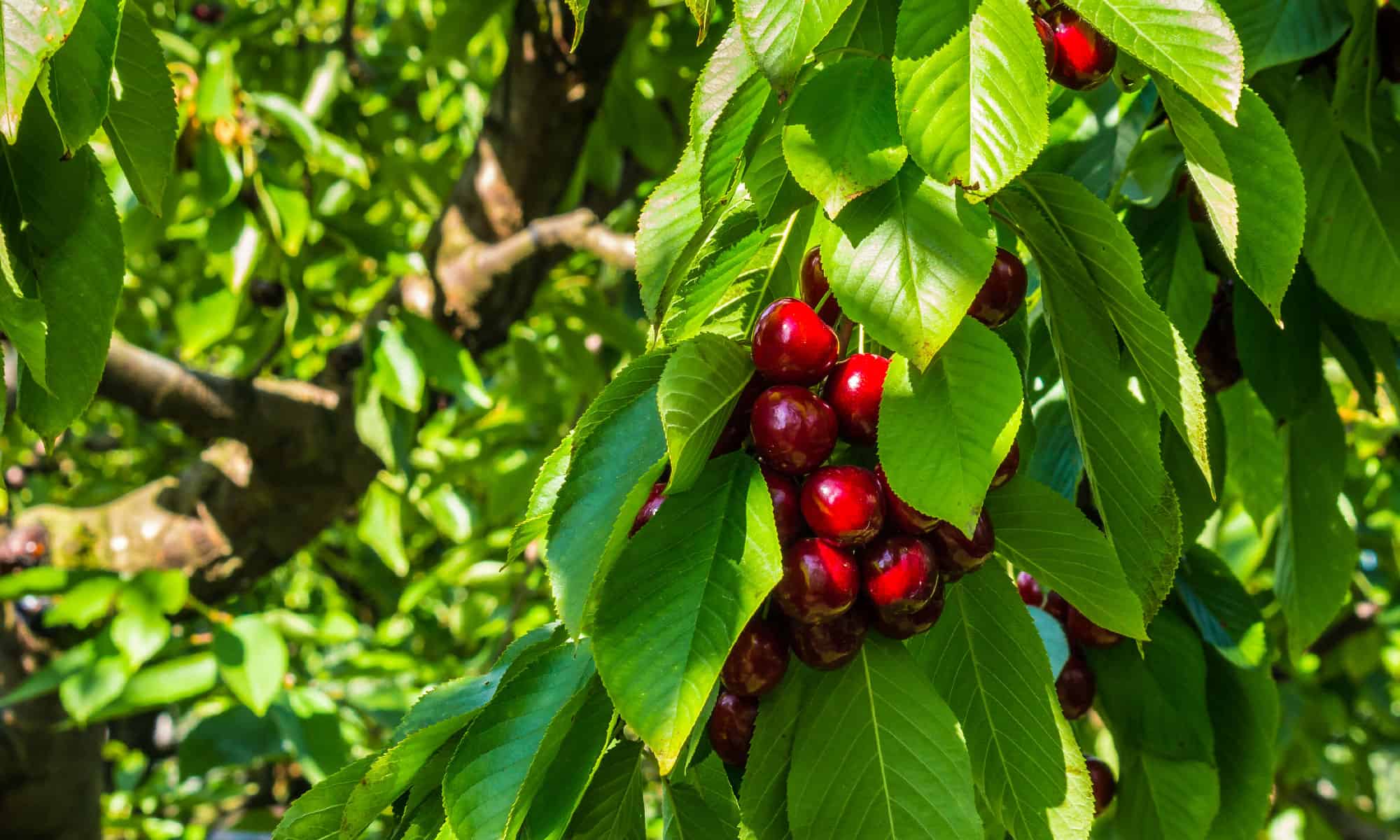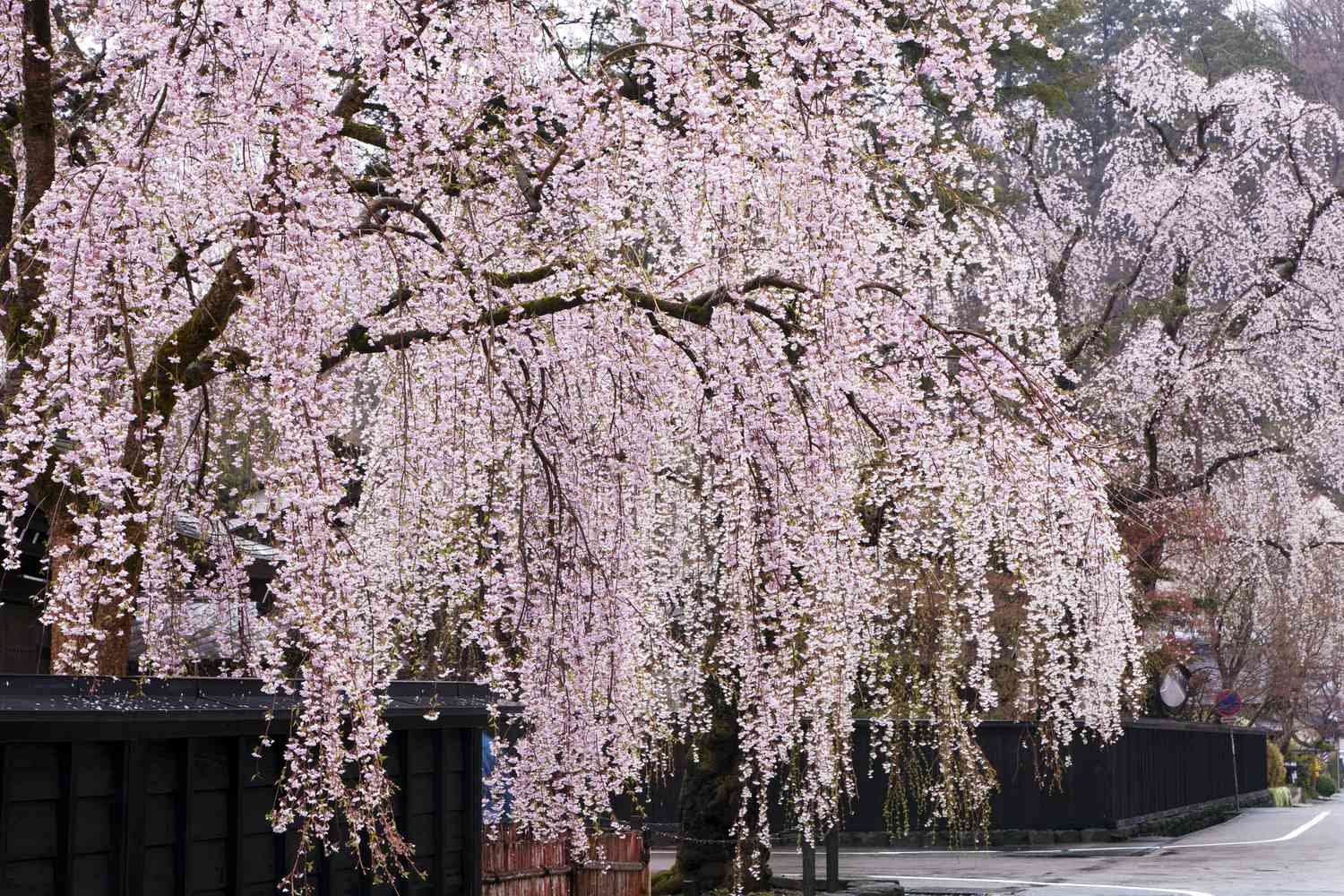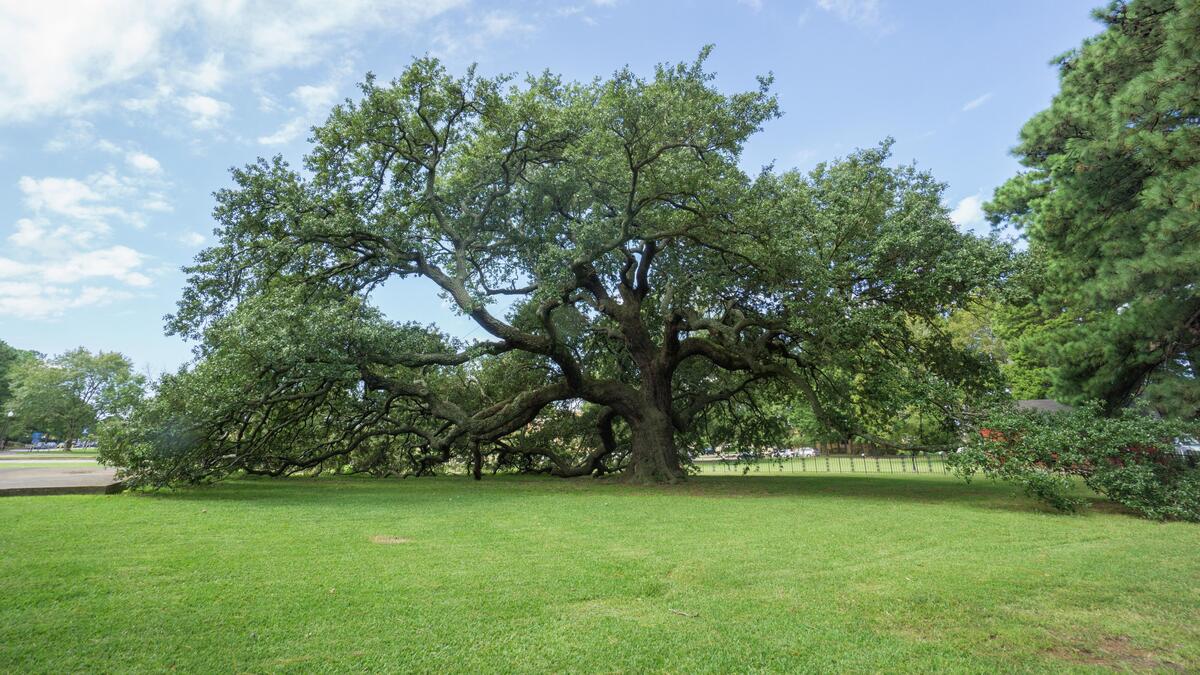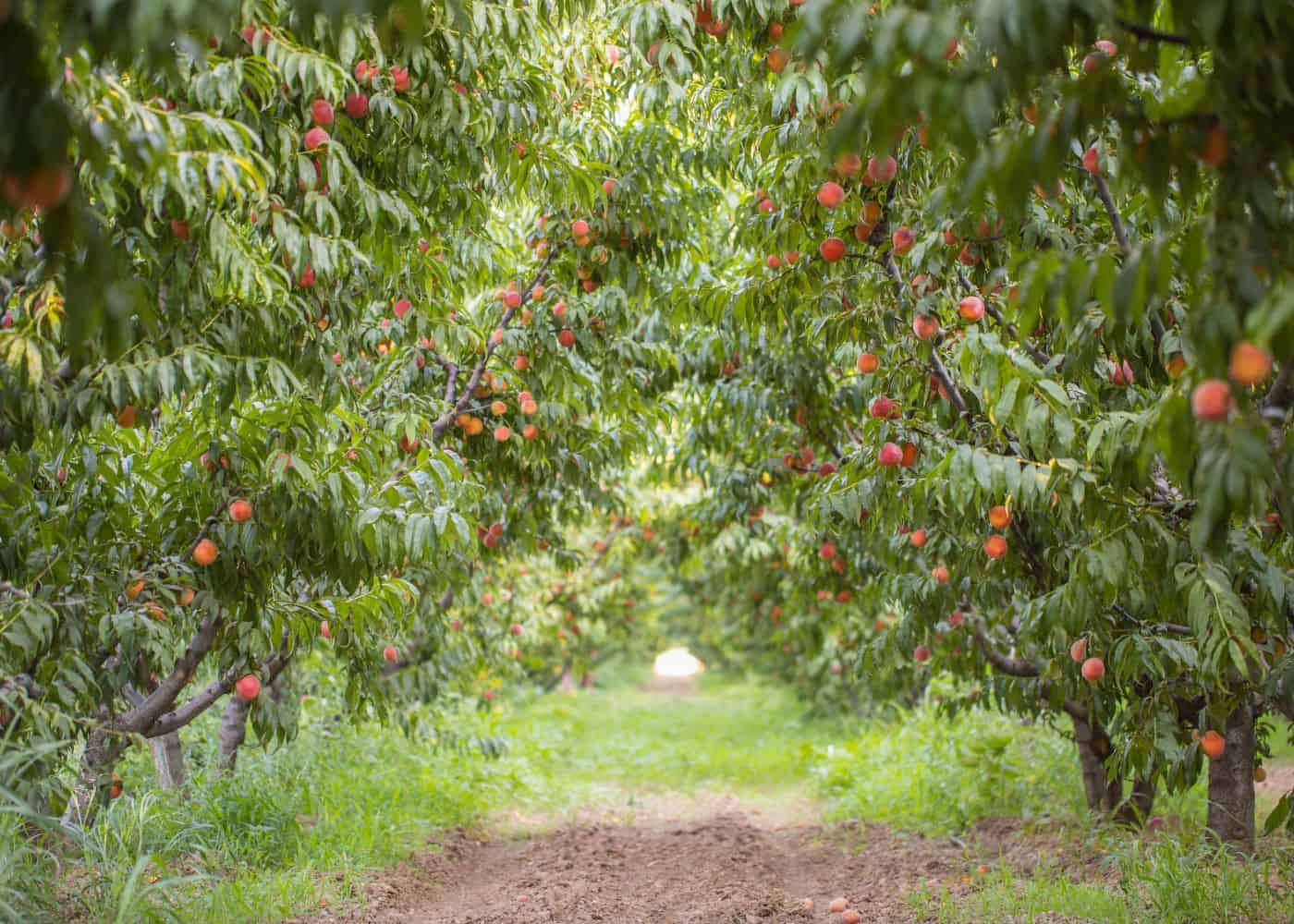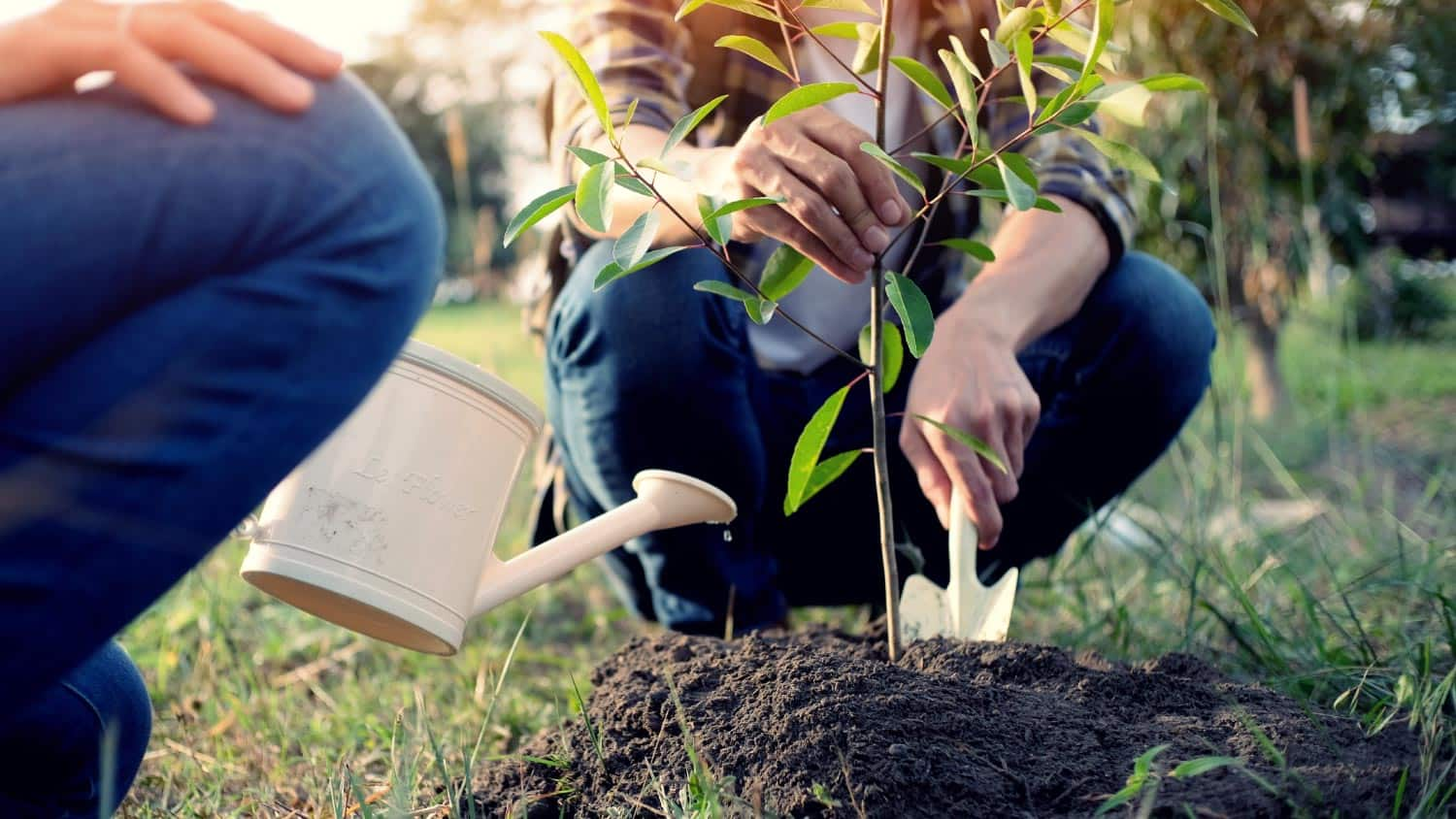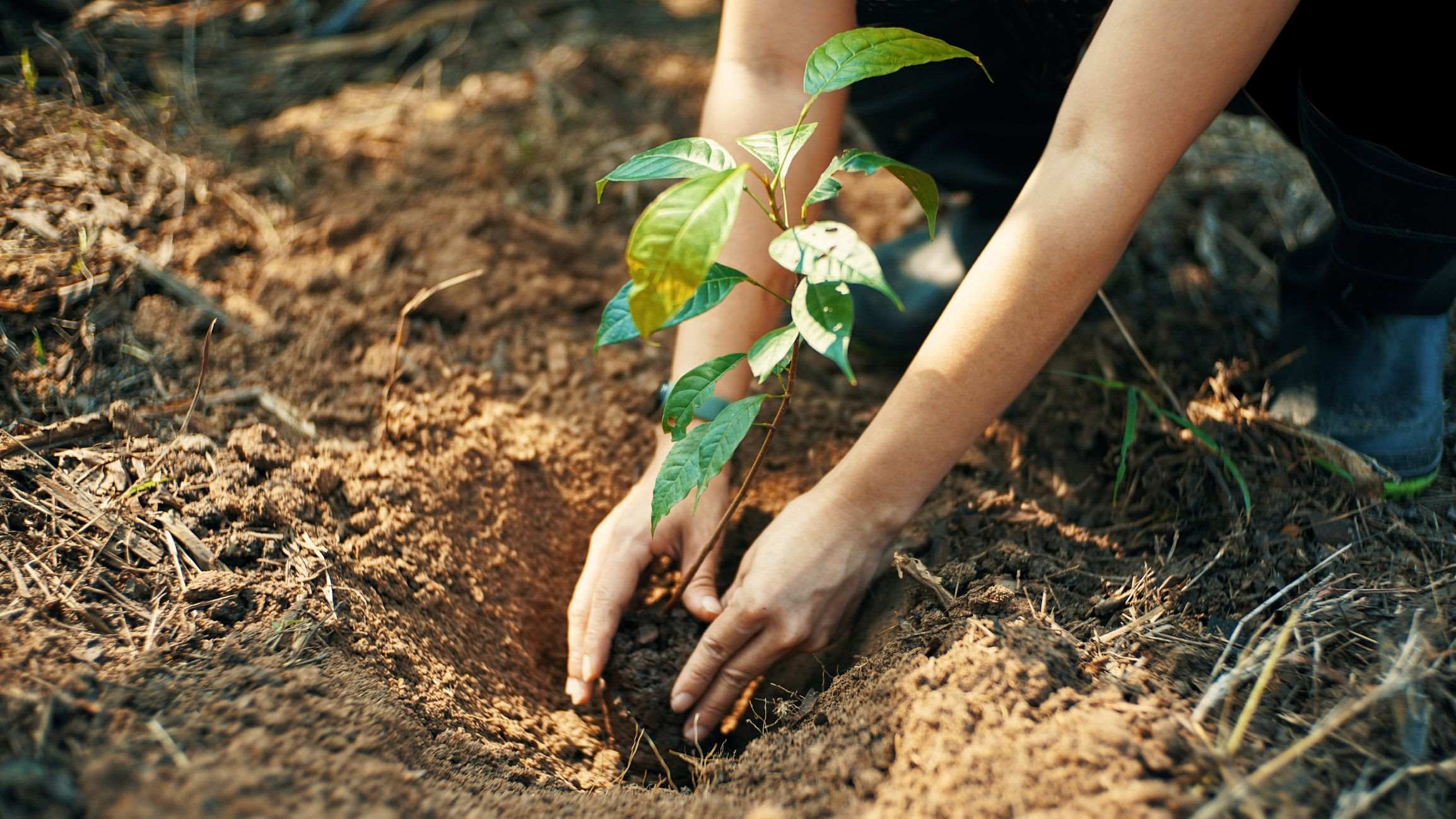Home>Gardening Techniques>Plant Care>How Much Are Cherry Blossom Trees
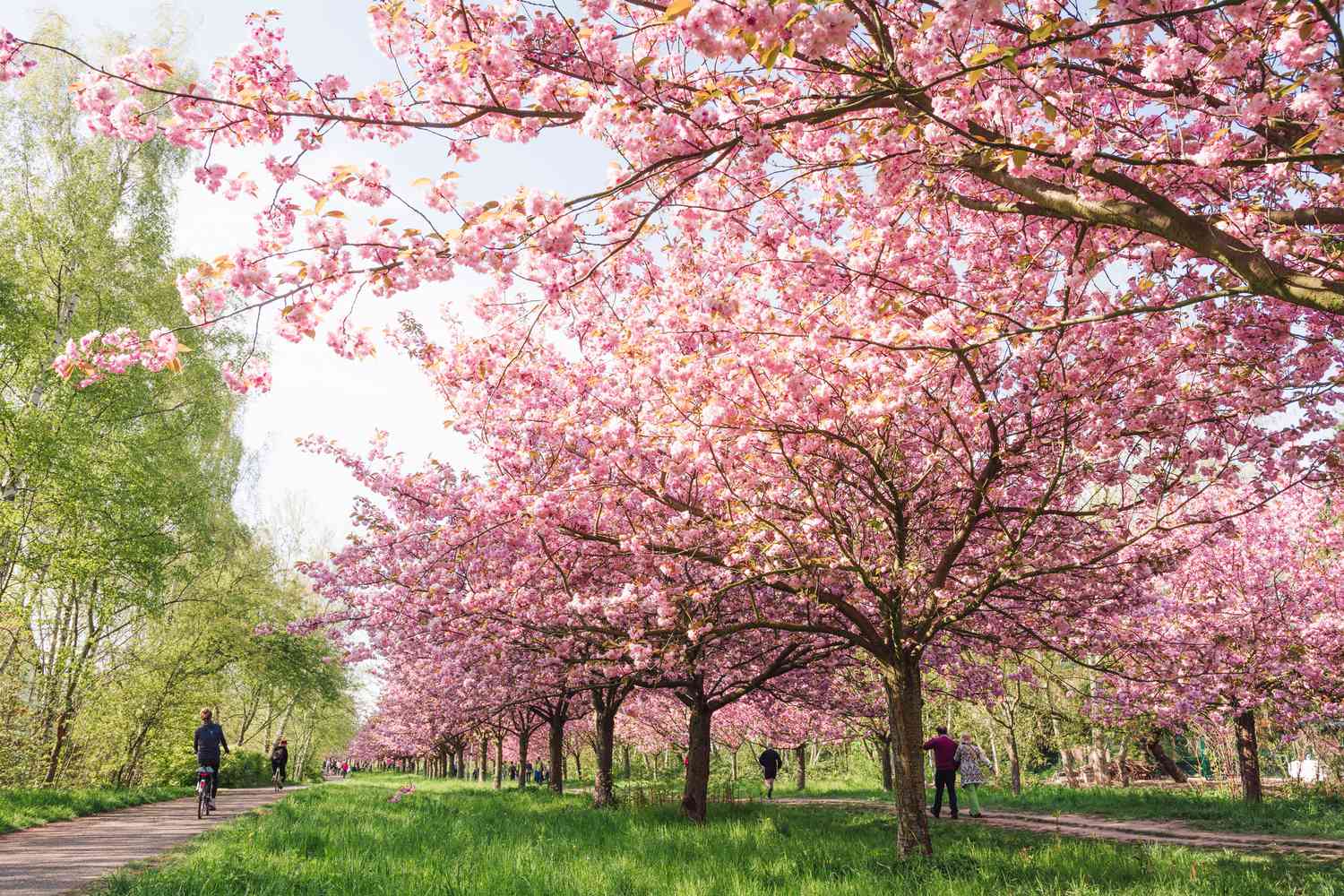

Plant Care
How Much Are Cherry Blossom Trees
Published: October 29, 2023
Looking to know how much cherry blossom trees cost? Learn about plant care for cherry blossom trees and find out their price range.
(Many of the links in this article redirect to a specific reviewed product. Your purchase of these products through affiliate links helps to generate commission for Chicagolandgardening.com, at no extra cost. Learn more)
Table of Contents
Introduction
Welcome to the enchanting world of cherry blossom trees! These beautiful trees, known for their delicate pink and white flowers, have captivated people around the world for centuries. From their origins in Japan to their popularity in various cultures, cherry blossom trees offer not only aesthetic beauty but also significant cultural and emotional significance.
In this article, we will explore the rich history and cultural significance of cherry blossom trees, as well as provide insights into the growth and maintenance of these magnificent trees. Whether you’re a seasoned gardener or a beginner plant enthusiast, this article will equip you with the knowledge to appreciate and care for cherry blossom trees.
Cherry blossom trees, scientifically known as Prunus serrulata, are native to several countries in East Asia, especially Japan. These trees bloom in the spring, casting a magical spell over the landscapes they adorn. Each delicate petal represents the fleeting nature of life and the ephemeral beauty that lies within.
Throughout history, cherry blossom trees have become synonymous with renewal, hope, and beauty. They have been immortalized in art, literature, and even music, symbolizing the transient nature of life and reminding us to cherish each passing moment. The annual bloom of cherry blossoms has become a cherished event, drawing crowds of nature enthusiasts and inspiring awe-inspiring festivals.
Care and maintenance of cherry blossom trees require a combination of patience, knowledge, and love for nature. From proper planting techniques to regular pruning and protection against common pests and diseases, understanding how to care for these trees is crucial in ensuring their long-term health and vitality.
Whether you have a small garden or are looking to beautify a public space, cherry blossom trees make an excellent addition. Their vibrant flowers and graceful branches provide a stunning display that can enhance any landscape. These trees also attract pollinators, enhancing biodiversity and contributing to the overall health of ecosystems.
Throughout this article, we will explore the different varieties of cherry blossom trees, factors that affect their cost, and where to find them for purchase. Whether you dream of creating your own cherry blossom oasis or simply want to learn more about these remarkable trees, this article will provide you with the knowledge and inspiration to embark on your cherry blossom journey.
History of Cherry Blossom Trees
The history of cherry blossom trees can be traced back to ancient times, with its roots firmly planted in East Asian cultures. The love and admiration for these trees began in Japan, where they hold a special place in the hearts of the people.
The story of cherry blossom trees in Japan dates back over a thousand years. The practice of cherry blossom viewing, known as “Hanami,” originated during the Nara Period (710-794). It was during this time that Japanese nobles admired the cherry blossoms and held extravagant picnics, poetry readings, and musical performances beneath their blooming branches.
In the Heian Period (794-1185), cherry blossom trees became not only a symbol of beauty but also served as a metaphor for the fleeting nature of life. Japanese nobility embraced the philosophy of mono no aware, the appreciation for the beauty of impermanence, which was reflected in their poetry and artwork.
The popularity of cherry blossom trees continued to grow during the Edo Period (1603-1868). This era saw the rise of urbanization, and cherry blossom trees were planted in abundance in public parks and along riversides. The practice of Hanami extended beyond the nobility, with people from all walks of life gathering under the blossoms to celebrate the arrival of spring.
It wasn’t until 1912 that cherry blossom trees made their way to the United States. The mayor of Tokyo, Yukio Ozaki, gifted 3,000 cherry trees to Washington D.C. as a symbol of friendship between Japan and the United States. This act of goodwill sparked the annual National Cherry Blossom Festival in the U.S., which attracts millions of visitors each year.
Today, cherry blossom trees are not only found in Japan and the U.S. but have also found their way into various cultures around the world. These trees have become icons of beauty, grace, and the transient nature of life. They continue to inspire artists, poets, and nature enthusiasts, reminding us to appreciate the beauty that surrounds us, even in the most fleeting moments.
Understanding the history of cherry blossom trees allows us to appreciate the cultural significance they hold. Their presence in gardens, parks, and cities serves as a reminder of the rich heritage and the power of nature to bring people together.
Cultural Significance of Cherry Blossom Trees
The cultural significance of cherry blossom trees is deeply rooted in the traditions and beliefs of various cultures around the world. These trees have come to symbolize a range of meanings, including beauty, renewal, and the transience of life.
In Japan, cherry blossom trees, known as sakura, hold immense cultural importance. The blossoming of the cherry trees marks the arrival of spring, a season that represents new beginnings and the start of the school and fiscal year. The tradition of Hanami, or cherry blossom viewing parties, has been celebrated in Japan for centuries. Friends, family, and colleagues gather under the blooming trees, enjoying food, drinks, and music while appreciating the delicate beauty of the blossoms.
Cherry blossom trees are depicted in various forms of Japanese art, such as paintings, poetry, and literature. They are often associated with themes of love, beauty, and the evanescent nature of life. The cherry blossoms’ ephemeral nature is believed to reflect the impermanence and transient beauty of human existence, reminding people to embrace and appreciate the present moment.
Beyond Japan, cherry blossom trees hold significance in other cultures as well. In Chinese culture, the cherry blossom symbolizes feminine beauty and power. It is often associated with love and passion. The cherry blossom is also considered a symbol of good luck and prosperity in Chinese folklore.
In the United States, the annual National Cherry Blossom Festival in Washington D.C. has become a major cultural event that celebrates the friendship between the United States and Japan. During the festival, the blossoming cherry trees attract visitors from around the world, and various cultural events and performances take place. It is a time to appreciate the beauty of nature and the strong bond between the two countries.
Cherry blossom trees have also made their way into the cultural fabric of other countries. In South Korea, the cherry blossoms, known as beotkkot, are celebrated during the Jinhae Cherry Blossom Festival. The festival attracts millions of visitors who come to witness the breathtaking beauty of the blossoms and participate in various cultural activities.
Throughout the world, cherry blossom festivals and events are held to celebrate the fleeting beauty and cultural significance of these trees. The mesmerizing blooms symbolize the cycles of life, reminding us to cherish the moments we have and appreciate the ever-changing world around us.
The cultural significance of cherry blossom trees serves as a powerful reminder of the beauty and interconnectedness of different cultures. These trees bring people together, fostering a sense of unity and appreciation for the natural world. Whether in Japan, the United States, or elsewhere, the cherry blossoms continue to captivate hearts and inspire a sense of wonder and awe.
Growth and Maintenance of Cherry Blossom Trees
Growing and maintaining cherry blossom trees can be a rewarding experience, whether you have a small garden or a larger outdoor space. To ensure the health and vitality of these beautiful trees, it’s important to understand their growth requirements and implement proper maintenance practices.
Cherry blossom trees thrive in regions with distinct seasons, as they require a period of cold dormancy to successfully bloom. They prefer full sun exposure, which helps promote optimal growth and flower production. When selecting a location to plant your cherry blossom tree, choose an area that receives at least 6-8 hours of direct sunlight per day.
Well-drained soil is essential for the healthy growth of cherry blossom trees. Avoid planting them in areas that are prone to waterlogging, as excessive moisture can lead to root rot. The soil should be slightly acidic, with a pH ranging from 6.0 to 6.5. If the natural soil composition is not suitable, you can improve it by adding organic matter, such as compost or well-rotted manure, to enhance drainage and fertility.
Proper watering is crucial during the first few years of a cherry blossom tree’s life. Newly planted trees should be watered deeply, providing enough moisture to saturate the root zone. As the tree establishes, you can gradually reduce the frequency of watering. However, it’s important to monitor the moisture levels and ensure that the tree does not experience prolonged periods of drought.
Pruning is an essential maintenance practice for cherry blossom trees. It helps maintain their shape, improves air circulation, and encourages healthy growth. Pruning should be done during the dormant season, typically in late winter or early spring, before the tree starts to bloom. Remove any dead, damaged, or diseased branches, as well as any branches that are crossing or overcrowding. Be mindful not to over-prune, as this can negatively impact flower production.
Fertilizing cherry blossom trees can help promote healthy growth and abundant blooms. Apply a balanced, slow-release fertilizer in early spring, following the manufacturer’s instructions. Avoid excessive fertilization, as this can lead to excessive foliage growth at the expense of flower production. Regularly monitor the tree’s nutrient requirements and adjust the fertilizer application accordingly.
Protecting cherry blossom trees from pests and diseases is crucial for their overall health. Aphids, caterpillars, and scale insects are common pests that can infest these trees. Regularly inspect the foliage and trunk for any signs of pest infestation, and take appropriate measures to control them. Additionally, be on the lookout for common diseases such as blossom blight and root rot, and promptly address any issues to prevent further damage.
By understanding the growth requirements and following proper maintenance practices, you can enjoy the beauty of cherry blossom trees for many years to come. These trees not only bring joy and tranquility to any landscape but also serve as a reminder of the delicate balance between nature and human intervention.
Varieties of Cherry Blossom Trees
Cherry blossom trees come in a wide variety of species and cultivars, each offering its own unique characteristics and beauty. Whether you prefer traditional pink blossoms or rare variations, there is a cherry blossom tree for every taste and preference. Let’s explore some of the popular varieties:
1. Somei Yoshino: This is one of the most iconic cherry blossom varieties and the most commonly seen in Japan. The Somei Yoshino features delicate, pale pink flowers with five petals, creating a beautiful and ethereal sight when in full bloom. The flowers appear before the leaves, creating a stunning contrast against the bare branches.
2. Kwanzan: Known for its abundant double pink flowers, the Kwanzan cherry blossom tree is a favorite amongst many. The large, fluffy blooms create a breathtaking display and make it a popular choice for gardens and parks. The Kwanzan variety is also celebrated for its vibrant fall foliage, which adds another layer of beauty to the tree.
3. Yoshino Cherry: Similar to the Somei Yoshino, the Yoshino cherry tree is renowned for its pale pink blossoms. It is a fast-growing variety with graceful branches that spread out, creating a wide canopy. The Yoshino cherry tree is a common choice for landscaping projects and is often planted in rows to create stunning avenues of blossoms.
4. Autumnalis: Unlike other cherry blossom trees, the Autumnalis variety provides a unique twist. It blooms twice a year, once in the spring like other cherry trees, and again in the autumn. The soft pink flowers appear intermittently, bringing a touch of unexpected beauty during the fall season.
5. Shirofugen: This variety of cherry blossom tree is known for its stunning, large, double flowers. The blossoms start as pink buds, gradually opening up to reveal creamy white petals tinged with pink on the edges. The Shirofugen variety is truly a showstopper and adds an elegant touch to any landscape.
6. Snow Fountain: If you’re looking for a compact cherry blossom tree, the Snow Fountain is an excellent choice. It is a weeping variety, with cascading branches covered in beautiful white flowers. The Snow Fountain cherry tree is perfect for smaller gardens or as a focal point in a container.
These are just a few examples of the many varieties of cherry blossom trees available. Each variety offers its own unique beauty and charm, allowing you to find the perfect tree to suit your preferences and the specific requirements of your garden or outdoor space.
When selecting a cherry blossom tree, consider factors such as bloom time, size, and overall appearance to ensure it fits your desired aesthetic. No matter which variety you choose, the beauty and tranquility of these trees will undoubtedly bring joy and a sense of wonder to your surroundings.
Factors Affecting the Cost of Cherry Blossom Trees
The cost of cherry blossom trees can vary depending on several factors. Understanding these factors can help you make informed decisions when purchasing these trees and budgeting for your gardening or landscaping projects. Let’s explore some of the key factors that influence the cost of cherry blossom trees:
1. Size and Age: The size and age of the cherry blossom tree significantly impact its cost. Younger saplings or smaller trees are generally less expensive compared to larger, more mature trees. Mature cherry blossom trees, with established root systems and robust canopies, are often more sought after and therefore command a higher price.
2. Species and Variety: Different species and varieties of cherry blossom trees can vary in cost. Some sought-after or rare varieties may come at a premium due to their unique characteristics or limited availability. The popularity and demand for certain species, such as the iconic Somei Yoshino or Kwanzan, can also influence the price.
3. Tree Form and Structure: Cherry blossom trees are available in various forms, including standard trees with a single trunk, multi-stemmed trees, and even espalier forms trained against walls or fences. These different forms require different cultivation and maintenance techniques, which may impact their pricing.
4. Supplier and Source: The supplier and source of the cherry blossom trees can affect the cost. Specialized nurseries or garden centers that focus on rare or high-quality specimens may charge a premium for their products. Additionally, the distance or location of the supplier in relation to your area can also impact transportation costs and, subsequently, the overall price.
5. Container vs. Bare Root: The method by which the cherry blossom tree is sold can impact its cost. Trees sold in containers, with their root systems intact, tend to be more expensive than bare-root trees. Container-grown trees offer the advantage of being able to plant them at any time of the year, while bare-root trees require planting during specific seasons.
6. Additional Services: Some suppliers may offer additional services, such as tree delivery, planting assistance, or ongoing maintenance support. These services can add to the overall cost but may provide convenience and expert guidance, especially for those who are new to gardening or landscaping.
It’s essential to evaluate these factors and determine your priorities when selecting cherry blossom trees. Consider your budget, the specific requirements of your garden or project, and the overall aesthetic and desired impact. By doing so, you can strike a balance between cost and quality, ensuring that you invest in trees that meet your needs and bring lasting beauty to your outdoor space.
Average Cost of Cherry Blossom Trees
The cost of cherry blossom trees can vary depending on several factors, as mentioned in the previous section. While it is challenging to provide an exact price range, we can provide a general idea of the average cost based on common market trends.
Younger cherry blossom saplings, typically ranging from 2 to 4 feet in height, can be found at an average cost of $25 to $50 per tree. These smaller trees are more affordable and are suitable for those on a budget or those looking to start a new cherry blossom grove.
Medium-sized cherry blossom trees, around 5 to 8 feet in height, typically range from $75 to $150 per tree. These trees are more established and may start to showcase their beautiful blossoms in a short period of time.
Larger and more mature cherry blossom trees, standing at 10 feet or taller, can range from $200 to $500 or more per tree. These stately trees provide an instant impact and are often sought after for their grandeur and immediate blooming potential.
Rare or specialty varieties of cherry blossom trees may command higher prices due to their unique characteristics or limited availability. These specialty trees can range from $500 to several thousand dollars, depending on their rarity and demand.
It is important to note that these prices are general estimates and can vary based on factors such as location, supplier, and specific tree characteristics. Additionally, additional costs such as delivery, planting services, and ongoing maintenance should also be taken into consideration when budgeting for cherry blossom trees.
When purchasing cherry blossom trees, it is advisable to research and compare prices from different suppliers to ensure that you are getting the best value for your investment. Consider the quality and health of the trees, as well as any guarantees or warranties provided by the supplier.
Lastly, keep in mind that the cost of cherry blossom trees is not solely a financial investment but also an investment in the beauty and joy that these trees bring to your surroundings. Their delicate blossoms, vibrant colors, and cultural significance make them a worthwhile addition to any garden or landscape.
Where to Buy Cherry Blossom Trees
When it comes to purchasing cherry blossom trees, there are several options available, both online and offline. Here are some common sources where you can buy cherry blossom trees:
1. Local Nurseries and Garden Centers: Local nurseries and garden centers are a great place to start your search for cherry blossom trees. Visit your nearest nursery and inquire about their selection of cherry blossom trees. They often carry a variety of species, and the staff can provide guidance on the best tree for your specific needs and growing conditions.
2. Online Plant Retailers: Online plant retailers offer a convenient option for purchasing cherry blossom trees. Popular websites and online platforms dedicated to plant sales have a wide selection of cherry blossom tree varieties for you to choose from. Make sure to read customer reviews and check the seller’s reputation before making a purchase.
3. Arboretums and Botanical Gardens: Arboretums and botanical gardens sometimes have their own plant sales, where they offer a range of plant species, including cherry blossom trees. These organizations often focus on promoting and preserving different tree species, making them a reliable source for high-quality cherry blossom trees.
4. Tree Farms and Specialty Nurseries: Tree farms and specialty nurseries that focus on ornamental trees can be a valuable resource for finding specific varieties of cherry blossom trees. These establishments usually have a wide assortment of trees, including rare and hard-to-find varieties, for a more unique and diverse selection.
5. Local Gardening Groups and Associations: Local gardening groups and associations often host plant swaps, sales, or events where you can find cherry blossom trees. These community-driven activities are not only a great way to find unique plant varieties but also an opportunity to connect with fellow gardening enthusiasts and gain valuable knowledge and insights.
When purchasing cherry blossom trees, consider factors such as tree quality, availability, and the reputation of the seller. Ensure that the trees are healthy, disease-free, and well-suited to your climate and growing conditions.
Before making a purchase, it’s beneficial to gather information about the specific variety of cherry blossom tree you desire. Research its growth requirements, flowering time, and any special care instructions to ensure it is a good fit for your garden or landscape.
Remember, buying cherry blossom trees is not just about the transaction; it’s about supporting reputable sellers, promoting biodiversity, and enhancing the natural beauty of your surroundings. By choosing reliable sources, you can embark on your cherry blossom journey with confidence and enjoy the beauty of these remarkable trees for years to come.
Conclusion
Cherry blossom trees have a rich history, cultural significance, and captivating beauty that have captured the hearts of people around the world. From their origins in Japan to their presence in various cultures, these trees symbolize renewal, beauty, and the transient nature of life.
Growing and maintaining cherry blossom trees require a combination of patience, knowledge, and love for nature. Understanding their growth requirements, such as sunlight, soil conditions, and pruning techniques, is essential for their long-term health and vitality. By nurturing these trees, you can create a breathtaking and enchanting display in your garden or landscape.
There are numerous varieties of cherry blossom trees to choose from, each offering its own unique characteristics and appeal. Whether you prefer the iconic pink blossoms of the Somei Yoshino or the vibrant double flowers of the Kwanzan variety, there is a cherry blossom tree to suit every taste and preference.
The cost of cherry blossom trees can depend on factors such as size, age, variety, and source. It is advisable to research and compare prices, ensuring that you invest in high-quality trees from reputable sellers. Consider additional services such as transportation and planting assistance, as well as ongoing maintenance requirements.
Various sources, including local nurseries, online plant retailers, arboretums, and specialty nurseries, offer cherry blossom trees for purchase. Take advantage of these sources to find the perfect tree for your garden or landscape, and enjoy the beauty and cultural significance they bring.
In conclusion, cherry blossom trees are not just trees; they are a symbol of beauty, hope, and the interconnectedness of human cultures and the natural world. With their delicate blooms and ephemeral nature, these trees remind us to appreciate the present moment and the ever-changing beauty that surrounds us.


